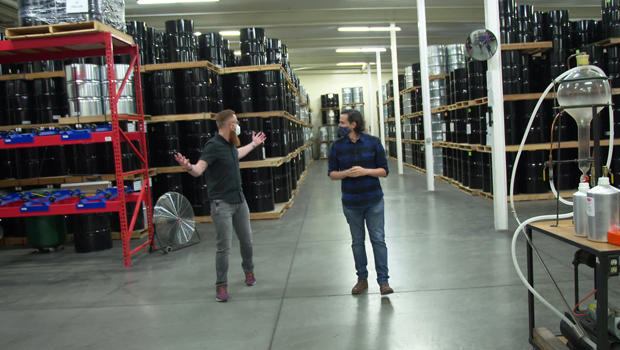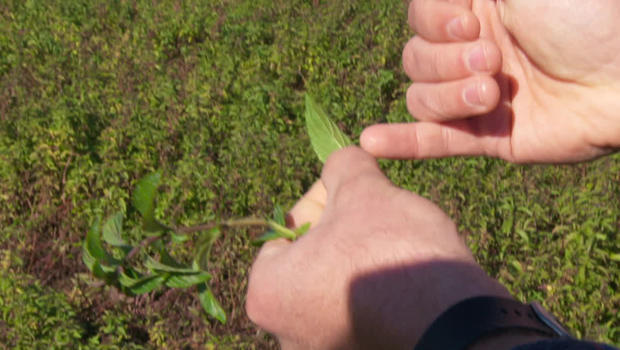Extracting the essence of mint
In central Washington, farmers pay close attention to the constantly fluctuating price of oil. But the crude they're concerned with isn't under the ground, it's on top of it, locked away in fragrant fields of mint.
"The mint oil is stored on the underside of these leaves; there's little glands, or sacklets, and that's what we're after," said Kevin Gilbert, a third-generation mint farmer.
"This is a crop you can raise a family on," told correspondent Conor Knighton.
Washington is the country's largest producer of mint, full of family farms like Gilbert's. But the crop isn't sold by the sprig; it's sold by the barrel.
After the mint is harvested, it's steamed, distilled, and then transported to a warehouse like one owned by Labbeemint.
"We've probably got over $50 million of mint oil sitting here in these walls," said Craig St. Hilaire, the president of Labbeemint.
Founded by peppermint farmer Jack Labbee in 1971, Labbeemint now contracts with hundreds of farmers to distribute mint oil around the world.
"If you've brushed your teeth with some of the name brand toothpastes, or used name brand mouthwashes, or have consumed any confectionary product with a mint flavor in it, there's a very, very high chance that you've had Labbeemint oils in those products," St. Hilaire replied.
Labbeemint's big customers include Colgate, Procter and Gamble, and Wrigley. Mint oil is used in everything from candy canes to aromatherapy treatments.
And a little goes a long way. "It's very potent, yeah," said St. Hilaire. "So, one barrel might flavor over five million sticks of chewing gum."
Mint's natural flavor can vary wildly. There are major differences between the two main species, peppermint (typically produced from the plant mentha piperita) and spearmint (a.k.a mentha spicata), and subtle differences based on everything from where the mint was grown, to when it was cut.
Labbeemint has dedicated sniffers on staff to make sure each variety of mint is up to snuff.
St. Hilaire said, "Our odor evaluators are really trained to be able to differentiate region by region, and how close to the control does it come."
Since mint oil is so concentrated, you need to dilute it if you want to taste it.
Knighton mixed some into batches of plain toothpaste. "I detect notes of … toothpaste," he said. I don't know if my palate's refined enough to appreciate the difference! How would you describe this? What makes this unique?"
"I like the Madras particularly," said St. Hilaire. "It tends to have a sweet characteristic as compared to some of the other peppermints."
Of course, most people aren't mint aficionados, which is why the biggest threat to farmers like Kevin Gilbert is a cheaper type of mint known as mentha arvensis that's primarily grown in India.
While Labbeemint creates whatever blends customers request (including oils from foreign soils), St. Hilaire feels there's no place like home. "We really love selling the American mint to customers," he said. "We feel it is, we know it is, the gold standard around the world."
For more info:
- Labbeemint, White Swan, Wash.
- Washington Mint Growers Association
Story produced by Anthony Laudato. Editor: Emanuele Secci.
Recipes:






